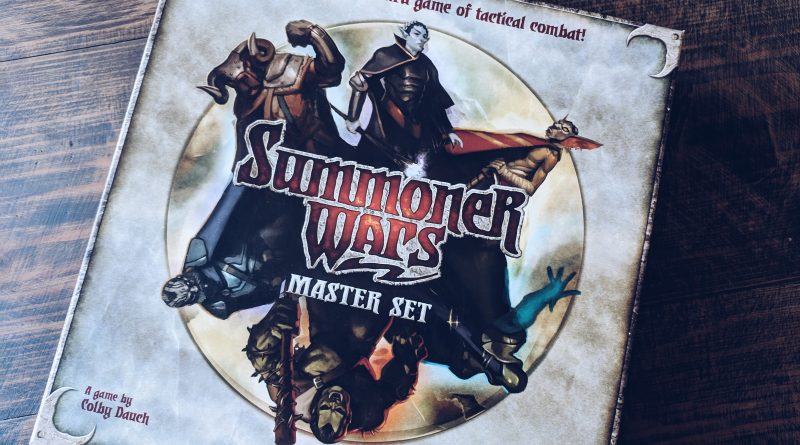Summoner Wars
Imagine you’re a wizard. Go ahead. I’ll wait. Alright good. Now imagine you specialize in spell slinging and summoning creatures to do your bidding – I guess that makes you a summoner, not a wizard. Okay now imagine that the guy on the hill across from you can do all the stuff you can, and he wants the same land you want.
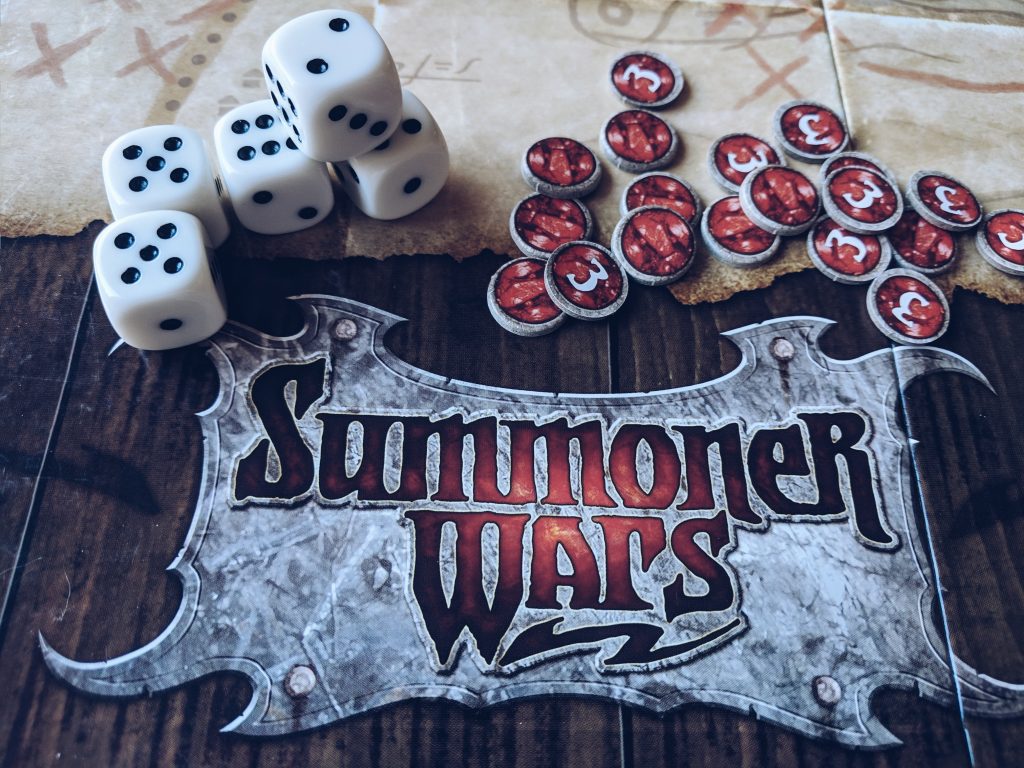
Today we’re checking out Summoner Wars – a fantasy battle strategy card game (or something like that) by Plaid Hat Games. In Summoner Wars, players control one of the many available races in a head to head (to head to head?) battle for the planet of Itharia. Why can’t a few different races share a planet? Not sure, but it’s fun. Let’s take a look.
NOTE: I originally reviewed my copy of Summoner Wars years ago for a different publication. My review style has changed drastically since then, and I feel Summoner Wars deserves a little more attention. My review is of the 2011 version of the Master Set, which is no longer in print (to my knowledge), but the basic mechanics of the game should remain largely unchanged.
Even after years, everything looks and feels relatively new. This is in part because I’m careful with my games, and in part because the component quality of the Master Set is just good. The board is well made, the box is sufficiently thick, all of the cards are printed well – I have no complaints.
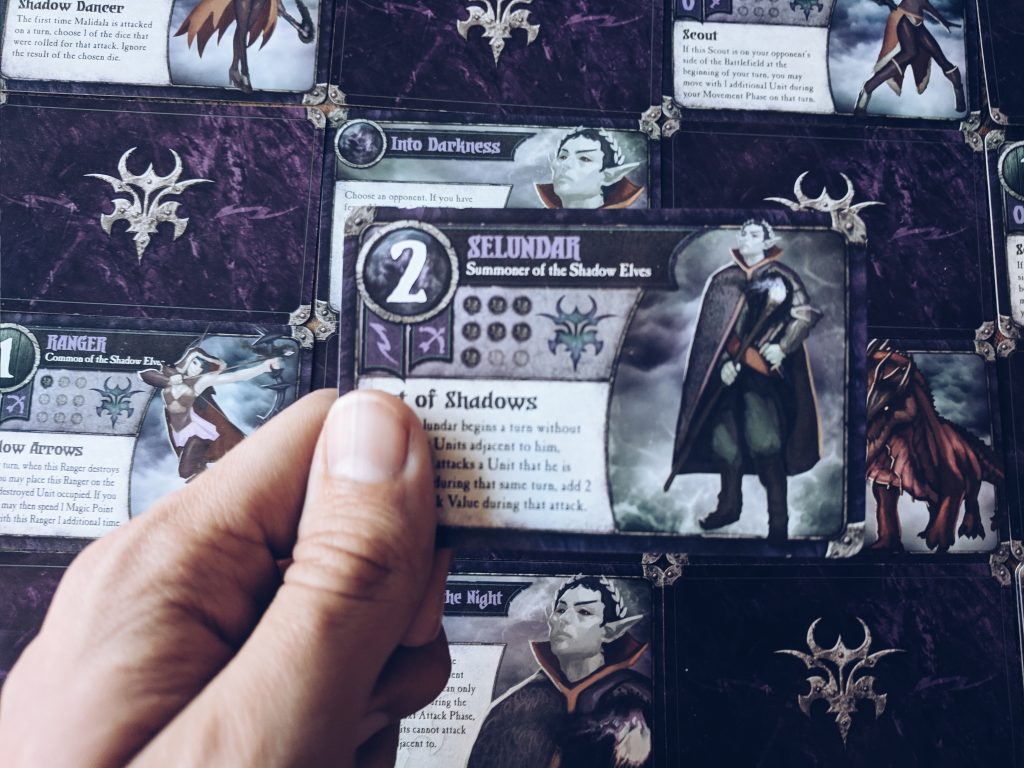
The art stands up to the test of time as well – all of the illustrations and graphics are great and fit the theme well. I love the color choices for the different factions. My one gripe is that some of the art is reused on the non-unit cards. It is done in a way that makes sense, but I still would have preferred unique illustrations for the different cards. Oh, and the board is a little shinier than I would have liked. Not a deal breaker by any means.
Setup is extremely simple, and is outlined well in the rule book. Both players pick a faction and take all of the associated cards. Lay out the game board, dice, and wound markers in a convenient location, then set up the board according to the Summoner Reference Card associated with the factions in play. Each player shuffles their deck, and sets it in the designated area. It’s worth noting that players do not draw at the beginning of their turn, so you will not start with cards in your hand.
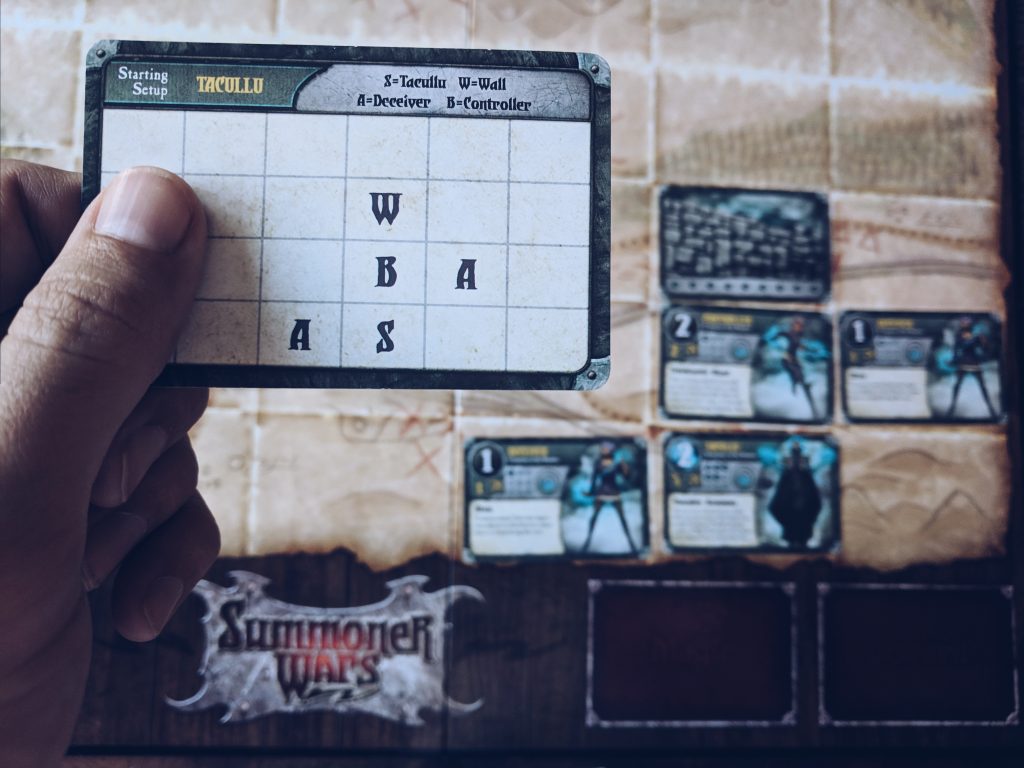
The goal in Summoner Wars is simple. Take down the enemy summoner(s) before they take yours down. Like chess, there is no end game scoring, achievements, or victory points. You just have to take down the king. Unlike chess, the summoner actually can defend itself pretty well, and has unique special abilities to that end. Turns are divided into six phases – Draw, Summon, Play Events, Movement, Attack, and Build Magic. Note that the first player’s first turn starts at the Movement phase.
- First, DRAW up to five cards, assuming there are cards left to draw.
- Then you may SUMMON units by discarding mana from your mana pool and placing the unit adjacent to a wall card you control.
- Then PLAY EVENT cards, as many as you want on your turn.
- MOVE up to three of your units up to two spaces…
- …then ATTACK with up to three units
- Finally, you can choose to BUILD MAGIC by placing any number of your cards into your mana pool.
Melee units can attack adjacent, while ranged units can attack up to three spaces in a straight line. To resolve attacks, roll a number of dice equal to the attacking unit’s attack value – any result higher than two is a hit, and adds one wound to the target. If a unit takes wounds equal to their health, the unit is destroyed and added to the attacker’s mana pool. When you go to build magic, know that you will draw again next turn, but your deck has a limited number of cards – be careful not to run out too early.
One little qualm I have about the setup process is that the reference cards are a little confusing at first. This is due to the fact that the letter assigned is not necessarily the letter the unit’s name starts with. I understand that naming all of the units with different starting letters would be unreasonable, but the unit cards should have the same letter on them somewhere to make this process smoother.
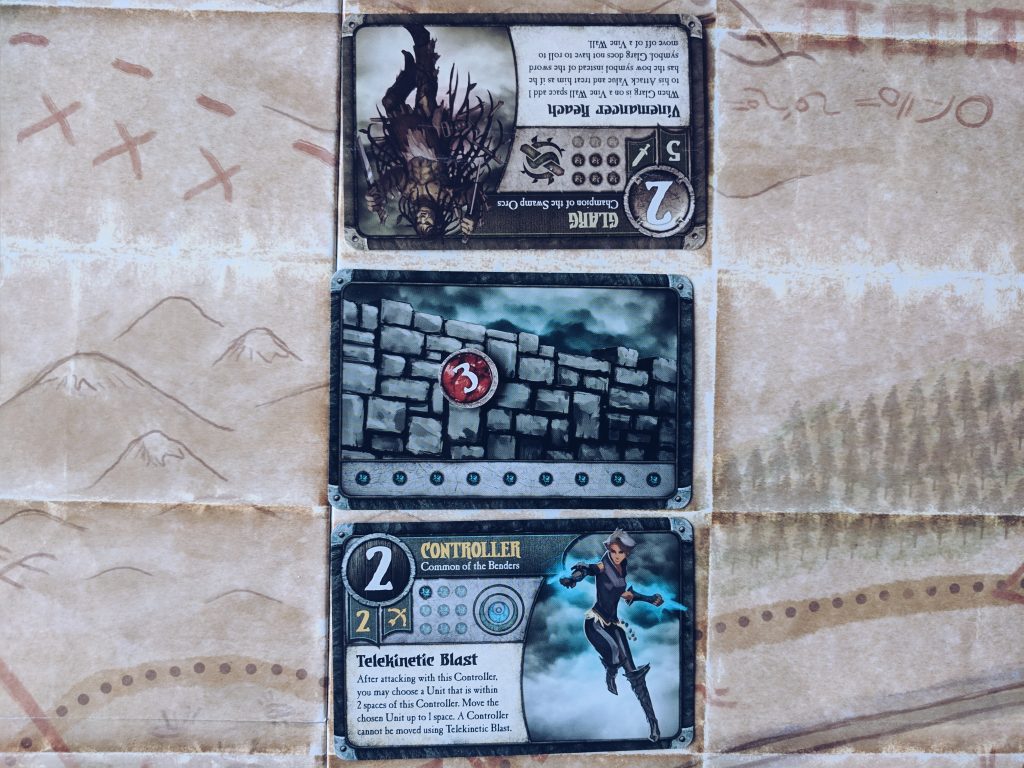
As you might be able to tell, I really like Summoner Wars. I like it enough that it has stayed in my collection for the past five years – the longest of any game I own at this point. I’m admittedly a little biased towards the fantasy genre in general. On top of that, Summoner Wars is one of the first games I played with my wife, so it holds some special appeal for me personally.
But it’s more than that. Summoner Wars bridges the gap between classic games like chess and fantasy games like Magic The Gathering. The factions I’ve played (6 of the available 24) are well balanced, and unless someone makes a pretty gnarly tactical error, the games usually end because one person runs out of cards to defend themselves with. The Build Magic phase in particular causes players to have to make hard decisions, losing cards that may have some later benefit in order to progress. It’s easy to teach, fun for multiple plays, expandable, and pretty balanced overall. If you’re looking for a tight, tactical fantasy game, try out Summoner Wars. I regretfully have not tried any of the other factions not included in the original Master Set, but if I do, I’ll be sure to let you all know.
Review copy provided by Plaid Hat Games.
Publisher: Plaid Hat Games
Number of Players: 2-4
Playtime: 30-60 minutes
Age: 9+
Please note the Master Set reviewed here is no longer in print, and goes for over $200 on Amazon. The current Master Set will get you into the game at a much more reasonable $40, and there’s even a starter set coming in lower than that, but it only includes 2 factions, so I’d suggest the current Master Set if you want to play the game mote than a few times.
If you are interested in making a purchase based on this review, please consider following one of the links above. If you do, I will receive a small commission.
(Repost of original review from March 2019)

